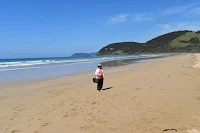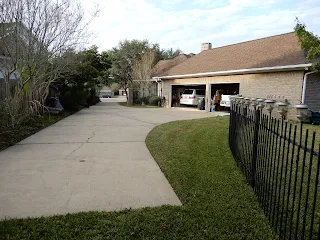Recently but relegated to the
inside pages of print media and as a filler segment in TV news, we found the
following:
A former Pentagon official who led a recently revealed government
program to research potential UFOs said Monday evening that he believes there
is evidence of alien life reaching Earth.
"My personal belief is that there is very compelling evidence that
we may not be alone," Luis Elizondo said.
He said some aircraft they looked into were "seemingly defying the
laws of aerodynamics".
What is known as well was the
fact that the U.S. government had spent north of $22 M to study UFO phenomenon
from early 2000, ending in 2012. This latest effort could have had more impact than the U.S. Air Force “Project Blue Book” from the 50’s and would have been a bigger deal
except, perhaps, for a snippet of news that cast a shadow with a tint of
political payback.
Nevertheless, we can set all that aside. Now, as
difficult as it can be for most folks including myself who have our religious
faith to reckon with, let's take a look at this phenomenon with a different set of
lenses temporarily (if that is ever possible).
In a population of people that are over 70% believers in faith-based Omnipotent power in one form or another also believe (65% among men, 46% among women) that UFO sightings are real, even though they do not have personal direct experiences with the phenomenon. Whether we believe that life only exists here and here alone or there is life somewhere else, we can suspend those at the moment and resist compulsion to argue or debate the two sets of ideas. Even among those who show no interest whatsoever, or those who profess agnosticism to the phenomenon, the term UFO is recognized without any confusion.
In a population of people that are over 70% believers in faith-based Omnipotent power in one form or another also believe (65% among men, 46% among women) that UFO sightings are real, even though they do not have personal direct experiences with the phenomenon. Whether we believe that life only exists here and here alone or there is life somewhere else, we can suspend those at the moment and resist compulsion to argue or debate the two sets of ideas. Even among those who show no interest whatsoever, or those who profess agnosticism to the phenomenon, the term UFO is recognized without any confusion.
Science fiction fantasies, whether in the
form of movies, short stories and novels, are difficult to ignore at this point
in time when a good number of their depictions had been made real, i.e. radios, television, submarines, rocket propulsion, moon landing, even microwave ovens, etc.
Ancient alien visitation theorists, space travel advocates, scientists and
philosophers seem to have independently mix together a concoction of ideas that says, "we are not alone" in the
universe.
Since records have been kept and
organized, thousands upon thousands of UFO sightings were catalogued. Thousands upon thousands had been explained,
including current ones that come up, but there are a few hundred that remain
unexplained, including those observed by military pilots back in 2004, off San
Diego. The actual film footage with real time voice-over by the pilot were released which, by the way, was what prompted the news last week. There
were pursuits in the past by military jets and observations by commercial
pilots of flying objects described to defy current aerodynamic capabilities by
any nation, and often describe to also defy the laws of physics, i.e. right
angle turns at very high speeds or objects that are first observed to hover
only to take off vertically and disappear at supersonic speeds. Then there were
countless alien abductions – close encounters of the third, or is it now the
fourth kind?
UFO, we’re told, simply means, as
its meaning suggests, “Unidentified Flying Object” but not necessarily that it
is of extra-terrestrial origin. This reminds me of a tribe in the middle of the
Amazon jungle that even up to this day lives in complete isolation from the
rest of the world. As far as I know
they’ve been left alone except for the occasional fly over by single engine
aircraft. That was how the tribe was discovered. The natives are seen in the
film footage looking up and pointing to the strange flying object. To them that
would have been a UFO compared to the familiar flying birds and bats.
So, where are we today on the
issue of UFO’s? If we're not alone, what are extraterrestrials going to look like? Items One through Ten below are points to ponder while Finally is the counter balance that will or could far outweigh everything in the first nine.
One. It is hard to imagine that in the whole universe of multiple billion
galaxies, each galaxy with hundreds of billions of stars, that ours – an
average size spiral one – is the only galaxy to harbor the one and only life-sustaining planet circling an
average size star. It not only defies statistical probabilities, it is a very human-centric and hubristic view of our place in the universe. Philosophically,
can we actually believe that all of these that we see around us, the whole
universe where our little blue planet is the size of an atom, circling around a solar system the size of a grain of sand that is just one of all the grains of
sand in all the beaches around the world combined, are solely just for us? Next time you're on a beach or sand box, pick up up a grain of sand and convince yourself that it is the only one with something living on it and the rest of the grains of sands are devoid of any life form.
Two. According to one estimate, using the Drake Equation (you can
look this up but you don’t need to because it is staggeringly unimaginable to
contemplate the probabilities), it is calculated that there should be quite a
number of habitable worlds similar to earth in our own galaxy alone that could
be home to civilization with advanced enough technology to communicate beyond
its planet and a million fold more in nearby galaxies who may already have the
capability to traverse the vast space between stars to reach other worlds. Of
course, this prompted one scientist to ask in jest, “But where are they?” Until such time when a UFO does land somewhere and out comes an entity proclaiming, "Take me to your leader", the contentious debate continues.
Three. It is always about distance, distance, and distance. When
the first explorers first set out to see the rest of the world or what’s out
there beyond the horizon, they faced fear of the unknown. They couldn’t and didn’t
worry too much about what they could not possibly know at that time. They didn’t know how long before they reach anything, speculate on what they will find, or whether they had enough provisions to last the
entire journey and whether they can retrace their way back to return and come back home safely. The rest is now part of our history. Today, we know enough what lies
ahead if we must embark on a journey towards the stars. The prime impediment is, of course, distance, distance and distance. If you were a light beam, blazing at
300,000 kilometers per second
it will take you 4.2 light years to get to our nearest stellar neighbor, Proxima Centauri. That is a distance of 39 quadrillion kilometers. It is not exactly
the next town over yonder, is it? NASA just announced that it will launch a spacecraft for Proxima Centauri in 2069. That much lead time will allow the agency to have come up with a vehicle and propellant system to achieve 10% the speed of light. That, by the way, is a very tall order in terms of overcoming technological barriers to propel a spacecraft to 30,000 km/second that could cost the entire global GDP (gross domestic product); yet, it will not reach our nearest star-neighbor until 2113. If it does get there we, our great grandchildren actually, will not know till after 2117 whether the craft made it all right. Any more communications after that will have an 8+years turn around each time.
Four. The first man-made
space craft to leave our solar system is hurtling through space right now at a
breakneck speed (by our current standards) of 61,142 kilometers/hour. For all that time, it had not encountered anything. It is a machine although by today's technology a rudimentary one. It is a bottle with a message floating in the vast ocean of empty space that we hope will be picked up one day by some unknown life form able to decipher earthling language. It is a probe that, in retrospect, will direct the finder to us. It is being debated today whether that was the wise thing to do. Well, we can't worry about that now because every second of TV and radio broadcast, every time we talk on the phone, beacons of electronic signals are broadcast far and wide into outer space. The signals can easily be traced to where we are. Electronic bread crumbs are pretty much all over the nearby area of the cosmos to lead to us. Still the odds are far too great against E.T. listening in, let alone be interested to launch an expedition based on feeble electronic signals.
Five. It is also about physiology, physiology, and physiology. Life forms as we know them - from microorganisms
to the blue whale – are bound by laws of biology. The basic biological unit - the
cell - grows, sub-divides, consumes nutrients to convert to energy, support other
cells but each one has a shelf life of only so much and its expiration date is
inviolable. The reason earth is teeming with life today is because the genes that control the cells are able to retain information that is passed on from dying cells to the replacement cells, from
parent organisms to their offspring. In effect, the information from each gene
is re-incarnated over and over. The instincts of birds and rodents, for
example, to mate with their own kind, to care for their young the way generations
of mothers had, or for salmon to go back to the place where they were hatched
to lay their own eggs when their time came, are all governed by information
being passed on. Scientists, biologists in particular, have no reason to
believe that life, if it exists anywhere else, will have developed and evolved
differently from the ones here.
Six. We and other animals in parallel development that had survived
so far had adapted so very well that our present forms today are far superior
to previous models from generations ago. We live longer, almost twice as long
as our ancestors only a thousand years ago and we had amassed so much knowledge
that we may one day stretch our life span twice more. Suffice it to say that a
civilization that had attained space travel to hop scotch from one star to
another or from one galaxy to the next one will likely have solved the issue of
immortality. If they had, it will not be purely biological. You read it here
first – those folks will have come up with a life form I will call bio-bots.
They will have successfully merged life’s original biology with artificial
intelligence and non-organic body parts. These alien visitors will not look
like E.T. at all. We will not recognize
them to have anatomical forms of biology. They will not look like robots
either. The extra-large head, buggy eyes, and skinny limbs are not likely to
survive the amount of acceleration to attain the necessary speed and prolonged
travel. Why feed a body with nutrients your
ship had to carry as extra cargo? Consuming nutrition is but an extra step that
can be eliminated when the goal is to provide energy for the most part and for
maintaining and growing body parts. Why not then pack along a renewable energy
source and minimal amount of nutrients or none at all if artificial body parts
are indestructible?
Seven. For prolonged travel
and to lessen the effects of extreme acceleration, radiation and minimum life
support system, space travelers ought to be miniaturized from whatever real
life sizes they exist in their native habitats. It only makes sense for as long
as the information they carry and need is kept intact and viable during the
journey and upon reaching their destination. The world they will have reached
will be so different from where they came from that whatever size they
originally had was immaterial. Surely,
they will either find organisms much too large or much too small, or both, as
we have here on earth. Therefore, it does not matter what size they are during
travel or upon arrival for as long as their original information are intact.
They can and will likely be able to evolve according to the new environment.
The time required for evolution will be inconsequential considering it may have
taken thousands or even millions of years of space travel to get to their destination. Co-evolving with the present life forms in the adopted environment sets
the clock to the present moment. We know how much information can be packed
inside the male and female chromosomes that will turn a minute embryo to a
complete and well defined adult mole rat or gray whale or to a human being with
attributes unmistakably similar to the contributing parents. So, why not pack
everything inside the size of a virus and let it fly away quadrillion miles to
the next star or gazillion miles to the next galaxy.
Eight. So, what about the virus? This microscopic entity that
cannot be classified truly as alive the way most organisms can be described is a survivor. It cannot
replicate itself on its own but it can trick a living cell to make a perfect
copy of itself while maintaining all the information that defines it as a particular
virus, adapting and mutating as necessary. It is the ultimate survivor. Why
can’t it be a model for any extraterrestrial that wants to make prolonged
journey and survive the trip? How do we know the virus is not an
extraterrestrial? It is perfectly designed, highly adaptable, and likely to
have survived through eons and eons of environmental changes, including extreme
cataclysmic events, and perhaps even influencing how organisms that it had
“infected” manage their adaptation. Or, did the viruses that plagued us over
time not help us adapt, or made us stronger? Each time a virus causes some sort
of epidemic, survivors were those equipped with special antibodies that were
passed on to their offspring. The common cold virus may provide just the right
training agents for our immune system to stay alert and remain strong. The flu virus kills a lot of people every
year but a lot more survive. The
survivors, like all others who survived most viral attacks, developed life time
immunity. Vaccines are also developed using the very virus that causes the
illness.
Nine. The tiniest wafer of technology made of plastic, metal and
silicon that we know today to be the latest smart phone is perhaps the ideal
precursor to bio-bot technology. Today’s smart phones are packed with so much
technology to carry on multiple functions of command, control and communication
wirelessly. Imagine what it can do decades from now when today it will open
garage doors and other entry points, turn on/off lights, close drapes, play
music, store and transmit vast amounts of data, take photos, make facial
recognition, etc. The computational power linked to miniaturized
replicas of highly evolved life forms make for a perfect space crew, traveling as bio-bots requiring the least amount of payload for life support systems thus making multiple thousand year journeys at extremely high speed possible. Space aliens may not come in
dramatic fashion in flying saucers or sausage shape space ships.
Ten. It is also about timing, timing, and timing. For 160 million years the dinosaurs dominated life on earth. They were at the top of the food chain while early mammals eked out a living under the shadows and crevices beneath rocks or vegetation. For all that time - 160 million years - if aliens had visited, no intelligent life forms were here to welcome or discern them and the place may not have been a welcoming location to them. Astronomical distances, because it takes a very long time to cover or traverse them, also separate life forms from various locations in the universe by time. It takes millions of years for life to develop and for civilization to emerge at various places in the cosmos but likely not at the same time. For example, as one intelligent life form develop technology to reconnoiter the cosmos they may find a world where life is still at its primitive stage; or, such a civilization may already have destroyed itself. Timing is crucial for one intelligent life form to intersect with another.
Finally. So there they are. They’re merely a contrasting and sharp backdrop of a few speculative thoughts not to confound you but to sharpen the view or views you may already have all along. Now we can discard all of the above. In the realm of philosophy, we go back to the question of whether religion or the religious belief in the Omnipotent all-knowing God is incompatible with the existence of life somewhere else simply because everything you were taught precluded that. Do you know that if we believe that life only exists here actually limits God’s ability to create life anywhere? God will have created and will continue to create life wherever He pleases. I do not see anything wrong with believing that the God who created the universe has in His power and might the ability to create life everywhere He wishes them to exist. And I repeat that if we continue to foster the belief that we are alone in the total vastness of the universe speaks only to the height of human hubris. Galileo was forced, for fear of excommunication, to abandon his idea that the earth was not the center of the universe. Of course, the church was wrong. Today the Vatican Observatory has a team of cosmologist priests who are attuned with the latest in cosmological research.
Finally. So there they are. They’re merely a contrasting and sharp backdrop of a few speculative thoughts not to confound you but to sharpen the view or views you may already have all along. Now we can discard all of the above. In the realm of philosophy, we go back to the question of whether religion or the religious belief in the Omnipotent all-knowing God is incompatible with the existence of life somewhere else simply because everything you were taught precluded that. Do you know that if we believe that life only exists here actually limits God’s ability to create life anywhere? God will have created and will continue to create life wherever He pleases. I do not see anything wrong with believing that the God who created the universe has in His power and might the ability to create life everywhere He wishes them to exist. And I repeat that if we continue to foster the belief that we are alone in the total vastness of the universe speaks only to the height of human hubris. Galileo was forced, for fear of excommunication, to abandon his idea that the earth was not the center of the universe. Of course, the church was wrong. Today the Vatican Observatory has a team of cosmologist priests who are attuned with the latest in cosmological research.
In every religion it is almost
universal for the Supreme Being to have come from the heavens and even return
there after many forms of earthly manifestation. It is not heresy to proclaim
that Jesus is from out of this world, that he arrived as an extraterrestrial, the Son of God from the heavens. His miracle birth was made known to the
wise men by a guiding star or light source from the heavens. He ascended to the
heavens three days after his death and is prophesied to return from the heavens
someday in an event that is the Second Coming. Both Islam and Christianity do
believe in the Second Coming, albeit in terms that for now are irreconcilably
discordant from each other. Judaism is not accepting the Second Coming in that
they have yet to see and experience the First Arrival of the Messiah. The Egyptian Pharaohs believed that their
reincarnated forms sailed in ships that soared to the high heavens. Many
other religions allow for similar transformation of the physical bodies into
other forms viable for heavenly transport.
"At that time the sign of the Son of Man will appear in the sky,
and all the nations of the earth will mourn. They will see the Son of Man coming
on the clouds of the sky, with power and great glory" (Matthew 24:30)
The above passage and many
similar passages from different books of the Bible, including from the Old
Testaments, unequivocally present a picture of the Messiah descending from the
heavens.
Now, if you thought you already had your mental exercise after reading this you'd be pleased to know that actually it had just begun.
Now, if you thought you already had your mental exercise after reading this you'd be pleased to know that actually it had just begun.






























